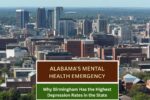The U.S. Department of Education has recently reopened applications for Income-Driven Repayment (IDR) plans, following a temporary suspension of certain repayment options due to legal challenges. The move comes after a court ruling that halted provisions of the Saving on a Valuable Education (SAVE) plan and other IDR programs, leading to significant uncertainty for millions of borrowers.
Background on the Legal Challenges
In February 2025, the Eighth Circuit Court of Appeals issued a ruling that temporarily blocked the SAVE plan, a new student loan repayment option intended to reduce monthly payments and accelerate loan forgiveness. The court’s decision also affected other IDR plans, including the Pay As You Earn (PAYE) and Income-Contingent Repayment (ICR) programs, casting doubt on the future of these repayment options for borrowers.
The ruling came after several legal challenges were raised about the provisions within the SAVE plan and its potential long-term impact on student loan forgiveness. In particular, the court’s decision focused on the SAVE plan’s provisions that allowed for lower monthly payments and faster loan forgiveness timelines, which some critics argued might not align with the legal framework governing student loan repayment.
As a result of the legal challenges, the U.S. Department of Education had to pause processing applications for these repayment plans and consolidation programs. This decision left borrowers uncertain about their repayment options, as many had already begun applying for the new plans, expecting significant relief.
Reopening of Applications
In response to the court’s ruling, the Department of Education has now reopened applications for several key student loan repayment options. These include the Income-Based Repayment (IBR), PAYE, and ICR plans, all of which allow borrowers to adjust their monthly payments based on income and family size. Additionally, borrowers can now apply for loan consolidation to combine multiple federal loans into a single loan with a single monthly payment.
The updated application process is now available on the Federal Student Aid website, allowing borrowers to select the repayment plan that best fits their financial situation. However, the application process has been revised to comply with the court’s ruling, which requires certain changes to the implementation of the SAVE plan and other related options.
“We’re committed to ensuring borrowers can access the repayment plans that are best for them,” said U.S. Secretary of Education, Miguel Cardona. “While legal challenges have created delays, our department is focused on supporting borrowers during this time and providing them with accurate and timely information on repayment options.”

What Borrowers Need to Know
For those affected by the court’s decision, there are a few key things to know:
- Updated Application Process: The U.S. Department of Education has revised the application for IDR plans, ensuring that it complies with the court’s ruling. Borrowers can now submit applications for repayment plans and loan consolidation through StudentAid.gov.
- Legal Uncertainty: The future of the SAVE plan, along with the PAYE and ICR plans, remains uncertain. Legal challenges continue to be a source of concern, and there could be further rulings that affect how these repayment options are implemented. Borrowers are advised to stay informed about any changes to the legal landscape.
- Loan Forgiveness: While the SAVE plan was designed to accelerate loan forgiveness, the court’s decision raised questions about whether this will continue to be the case. Borrowers participating in other IDR plans may also see delays in their forgiveness timelines.
- Loan Servicer Communication: Borrowers are encouraged to stay in close contact with their loan servicers to ensure they are receiving the most up-to-date information about their repayment options. Servicers can provide specific guidance based on individual circumstances.
Ongoing Legal Developments
Despite the reopening of applications, the legal battles surrounding the SAVE plan and other IDR programs are far from over. The Eighth Circuit Court’s ruling has raised broader questions about the legality of the forgiveness provisions in these plans, which could affect millions of borrowers in the coming years.
The Department of Education has indicated that it will continue to monitor the situation and provide updates as necessary. In the meantime, borrowers are urged to remain patient and proactive in managing their loans.
“We understand the frustration that borrowers are feeling,” said Secretary Cardona. “We are working hard to resolve these challenges and ensure that borrowers have access to affordable repayment options.”
What’s Next for Borrowers?
The reopening of applications provides a glimmer of hope for borrowers seeking clarity on their student loan repayment options. However, the legal landscape remains fluid, and it’s likely that there will be further developments in the coming months.
Borrowers are encouraged to visit the Federal Student Aid website regularly for updates and to check with their loan servicers for personalized guidance on repayment plans. Additionally, staying informed about ongoing legal challenges will be crucial for understanding how these decisions could impact long-term repayment strategies and forgiveness timelines.
Conclusion
As student loan repayment continues to be a pressing concern for millions of Americans, the reopening of IDR plan applications represents a step forward, even amid the ongoing legal challenges. While the situation remains uncertain, borrowers now have the opportunity to apply for repayment plans that offer some degree of relief. The Department of Education remains committed to ensuring that students and borrowers have access to the resources they need to manage their loans during this uncertain time.

Pankaj Kumar is a skilled content writer at OTE News, focusing on breaking news, technology, and socio-political developments. With a background in Mass Communication, he brings a balanced perspective to his articles, ensuring clarity and reliability. Pankaj has a knack for simplifying complex topics for readers.
In his free time, he enjoys photography, traveling, and experimenting with new cuisines. His curiosity and dedication to truthful reporting make him a valuable contributor to OTE News.




